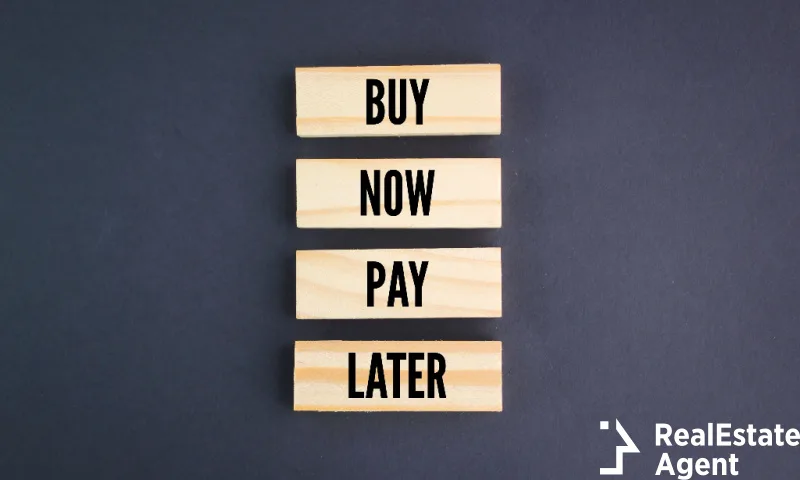In the dynamic world of real estate, strategies continually evolve to adapt to changing market conditions. One such strategy, gaining popularity among savvy buyers, is the “buy first, sell later” approach. This method, which involves purchasing a new home before selling the existing one, is becoming increasingly relevant, especially in competitive real estate markets.
The appeal of this strategy is rooted in the desire for a seamless transition between homes. In a fast-moving real estate market, finding your dream home and securing it before someone else does can be challenging. The buy-first approach offers a solution, allowing buyers to navigate this process with more control and less time pressure.
However, this approach has its complexities. It requires careful planning, a deep understanding of the market, and strategic financial management. In this article, we will explore the facets of the buy-first, sell-later strategy, offering insights and guidance for those considering this path in their real estate journey.
Understanding the Current Real Estate Market
According to Realtor, the current real estate market presents a landscape of rapid transactions and escalating prices, posing unique challenges and opportunities for buyers and sellers alike. com®’s 2023 Data Highlights Report, the median time on the market for homes in the United States was astonishingly brief at 19 days in May 2023. The median list price for homes also reached $450,000 during this period. These figures reflect a highly competitive market where traditional buying and selling methods may need reevaluation. In such a scenario, Realtor.com® advocates for the buy-first strategy as a viable option to increase a buyer’s chances of securing a desirable home.
This brisk market pace underscores the need for buyers to be exceptionally prepared and proactive. The shortened time on the market means that desirable properties are snapped up quickly, often receiving multiple offers. For buyers, this translates to a need for speed in real estate decision-making and readiness to act. The traditional approach of selling before buying may not be the most effective strategy in these circumstances. Instead, understanding the rhythm and flow of the current market is crucial in formulating a more practical approach to real estate transactions.
Furthermore, the elevated median list price indicates a seller’s market, where homeowners can expect to sell their properties at a premium. This aspect of the market dynamics should be a critical consideration for those contemplating the buy-first strategy. It suggests that buyers must be quick and decisive while they must be financially astute and strategic. For those considering buying first, a deep dive into market trends, pricing patterns, and the potential future trajectory of the real estate market is indispensable for making informed and successful decisions.
Grasping the gist of Buy-First, Sell-later
We all know how investments focus on profit-maximizing with minimum risks. In other words, according to traditional real estate investment practices, you must buy low and sell high. However, the Buy First, Sell Later strategy puts a courageous, often interpreted as reckless, spin on the status quo. Imagine you don’t wait for the opportune moment to sell a property for the highest return on investment. Instead, you’ll employ this strategy and prioritize purchasing properties regardless of the market conditions. And you do it with the intent to sell them at a later date.
The explanation behind this strategy is deeply rooted in the belief that real estate is a long-term investment. Simultaneously, they consider that property values increase over time. Call it blind faith in real estate, albeit a historically honored faith. By securing properties now and holding onto them, investors can capitalize on the natural growth of the real estate market while potentially benefiting from property value appreciation.
What’s the major difference between the Buy-First, Sell-Later, and short-term profit?
Do you have what it takes to apply the Buy First, Sell Later strategy to your own real estate investment practices? Right off the bat, we must warn you that it requires a long-term perspective, so forget turning a profit in the short run! Unlike short-term house flipping, where the plan is a fast turnaround for returns, this approach involves holding onto properties for an extended period, often years or even decades.
The Buy-First Strategy: When and Why It Works
As highlighted by Forbes through interviews with real estate experts, the buy-first strategy is a nuanced choice. It’s particularly suitable for those with high confidence in selling their current home swiftly. These experts stress the importance of having a backup plan, as there’s always a possibility that the sale of the existing house may take longer than anticipated.
Realty Times echoes these sentiments, emphasizing the benefits of this strategy. Buying before selling can prevent the inconvenience of moving multiple times. It can be a decisive factor in securing a dream home, especially in a competitive market. However, it’s crucial to approach this strategy with a well-thought-out plan and the guidance of experienced professional local real estate agents.
Strategies for a Successful Buy-First Transition
- Financial Planning and Analysis: One of the critical steps in a buy-first strategy is ensuring financial readiness. It’s essential to have a clear understanding of your financial situation and the ability to manage the costs associated with owning two properties, even if it’s temporary. This involves thorough budgeting, exploring financing options, and understanding the implications of various mortgage types.
- Market Research and Timing: Deep knowledge of market trends is indispensable. Buying first can be particularly advantageous in a seller’s market, where homes are sold quickly and at a premium. However, this requires timely market analysis to make the most of current conditions.
- Consultation with Real Estate Professionals: The role of experienced real estate agents must be balanced in navigating the complexities of buying and selling simultaneously. They offer valuable insights, assist in timing the market, and provide resources for both transactions. A good agent can distinguish between a smooth transition and a challenging one.
- Contingency Planning: Preparing for scenarios where the current home sells less quickly than expected is essential. This might involve arranging temporary accommodations, considering rental options, or exploring bridge financing to cover financial gaps.
- Leveraging Technology and Resources: In today’s digital age, various online tools and resources are available to assist in buying and selling. These include property listing platforms, market analysis tools, and financial calculators, which can provide valuable information for making informed decisions.
Overcoming Challenges and Mitigating Risks
Adopting the buy-first strategy has its challenges. The primary risk involves managing the financial and logistical aspects of owning two properties simultaneously. This necessitates not only sound financial planning but also strategic decision-making. It’s crucial to assess the market conditions, understand the potential risks, and have a clear mitigation plan.
Despite these challenges, the buy-first strategy can offer significant advantages. It provides the opportunity to secure a new home without the pressure of selling the existing one. However, it’s imperative to remember the core principle: buy a house before you sell yours but do so with caution and a well-structured plan.
Conclusion: Navigating Real Estate Transitions with Confidence
The buy-first, sell-later strategy represents a significant shift in traditional real estate practices, offering unique advantages in today’s fast-paced market. When executed with precision and foresight, this approach can provide buyers with an invaluable edge, enabling them to secure their desired property without the pressure of a concurrent sale. This strategy, while complex, opens up new possibilities for managing real estate transitions more effectively and with less stress.
However, the success of this strategy hinges on thorough preparation and informed decision-making.
Potential buyers must understand their financial landscape, stay abreast of market trends, and engage with experienced real estate professionals. These steps are not just precautionary but essential in navigating the uncertainties and challenges inherent in owning two properties simultaneously. A well-devised plan, complemented by professional guidance, can significantly mitigate the risks associated with this strategy.
In conclusion, when approached with careful planning, the buy-first, sell-later strategy can transform how buyers navigate the real estate market. It’s a testament to the importance of adaptability and strategic thinking in achieving real estate goals. As the market evolves, staying informed, prepared, and flexible remains critical to successful and satisfying real estate transitions. Remember, in real estate, being well-prepared and informed is not just beneficial; it’s essential.











